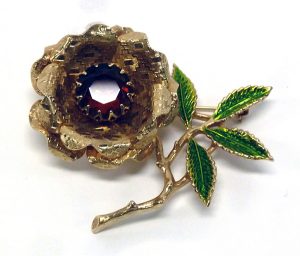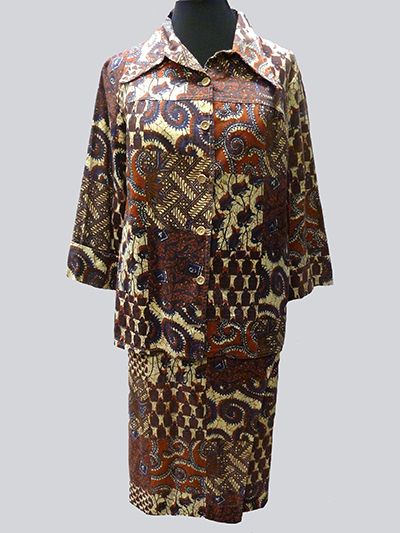FLORA AND FASHION: IMITATION FLOWERS AND PRINTS
By Nicole Johnston and Jean Parsons

September 20, 2018
Flora is imitated in a variety of forms and in every possible material. Three-dimensional forms are shaped in fabric, beads, grass, and metal, while two-dimensional representations can be made in embroidery, lace and prints. In many cultures floral designs carry with them symbolic aspects that can imbue the wearer with a variety of perceived benefits while worn on the body. For example, in Japan the chrysanthemum can symbolize longevity, rejuvenation and happiness, and is an emblem of the Japanese Imperial family. A “Festival of Happiness” is celebrated each year to honor the flower.















